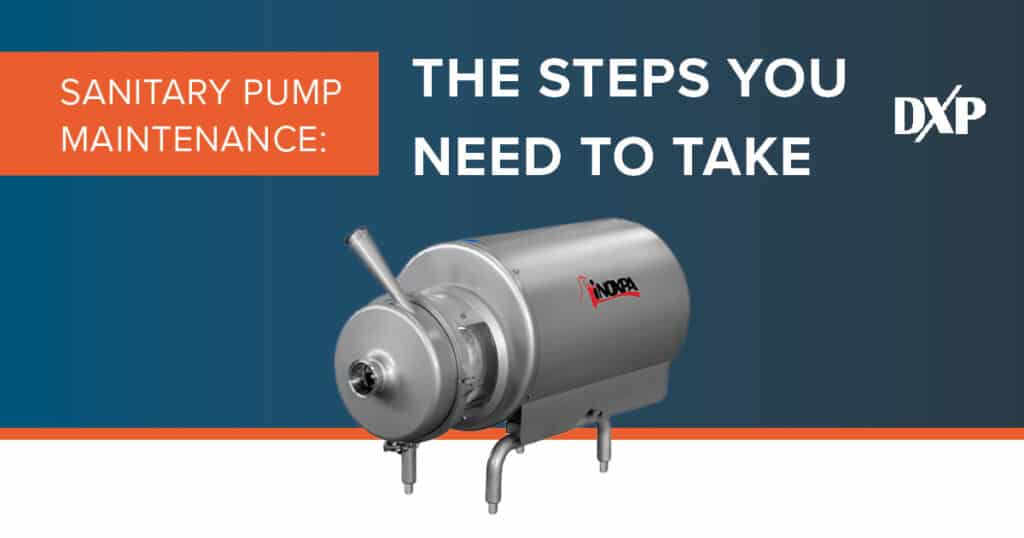There are numerous applications that require sanitary pumps to meet specific hygienic standards. They are commonly used in industries such as food and beverage, chemical processing, dairy, pharmaceuticals, brewing, and distilling. Each application may call for specific hygienic pump specifications.
A well-maintained sanitary pump should provide reliable performance for many years. Maintenance can be minimal as the hygienic nature of the pump design and materials are intended to keep the system clean inside. However, they do need to be properly cleaned. items must be monitored and replaced, and must be operated within the recommended specifications to minimize the risk of failure, damage, and other performance problems.
Here are some of the key steps you need to take as part of your sanitary pump maintenance program:
Contamination Avoidance
Avoiding contamination is a critical issue with hygienic pumps. You cannot allow foreign materials to invade the pump system and compromise the materials being processed. Miscellaneous debris, organic material, and other contaminants can cause significant problems. All points of the pump system (including upstream sources and downstream production lines) must be regularly inspected and monitored. Any issues should be addressed immediately to prevent the risk of contamination at any point in the pumping process.
System Monitoring
Monitoring your pump system goes well beyond just contamination avoidance. It must be monitored regularly in case there are any changes in the operating conditions. Key items to look for are pressure, flow rates, vibrations, and temperature. Note if there are changes in these indicators (especially if the materials flowing through the pump system aren’t changing in terms of viscosity). Take the necessary steps to solve any problems as early as possible to prevent major concerns within your hygienic pump system. Stay within the specified tolerances and resolve any notable deviations immediately.
Leak Repair
Leaking should always be a concern for a sanitary pump operator and should be detected quickly and repaired as necessary. The common issue here is a shaft seal that needs replacing, though costly leaks can happen at any point along the line. Recurring mechanical seal leaks are often a sign that the seal cannot handle the application. A good resolution is to upgrade to a more robust seal solution that is specifically designed for your process material and operating requirements. This will help prevent further leakage issues.
Pump Cleaning
Most sanitary pump equipment has specific recommendations when it comes to cleaning, and the process may be more customized based on your application. Some may only require hot water or steam while others may require a specific cleaning solution. It is imperative to clean the pump system properly and make it a key part of your overall maintenance schedule.
Pump Alignment
Most sanitary pumps have a two-piece design with a pump head connected to a gearbox. Misalignment can happen over time and cause excess damage to the equipment. Check the pump alignment regularly and adjust when needed.
Lubrication Management
Proper lubrication is vital in all machinery, especially pump equipment. Make sure all bearings, motors, and other lubricated components are inspected often. Reapply or replace lubrication when necessary to keep everything running smoothly.
Preventative Problem-Solving
A good sanitary pump operator will know when something isn’t right. They can sense problems before they happen. They are in tune with their equipment and take note of any unusual sounds, smells, vibrations, or changes in operating conditions. Keep your operators properly trained and empower them to take action when they notice anything strange. The right proactivity can help keep a minor issue from turning into a major problem.
Spare Parts
It is always smart to keep spare parts on hand, especially components that tend to wear out quicker than others. Have spare bearings, seals, and other parts ready in case they need to be replaced sooner than expected. Nothing is worse than having extended downtime while you wait for new parts to be shipped. The current supply chain issues are no joke, so don’t be left empty-handed!
Preventative Maintenance Plan
Most importantly, ensure you have a consistent and thorough preventative maintenance plan for your sanitary pump system. Know the regular steps that need to be taken and when. Take care of the necessary maintenance procedures while also monitoring and addressing potential problems as they occur. This is how you keep your hygienic pump equipment running at its best at all times.
For all your sanitary pump maintenance and repair needs, contact DXP Pacific. Let our team help you get the most out of your pump system, from installation to ongoing maintenance programs.

